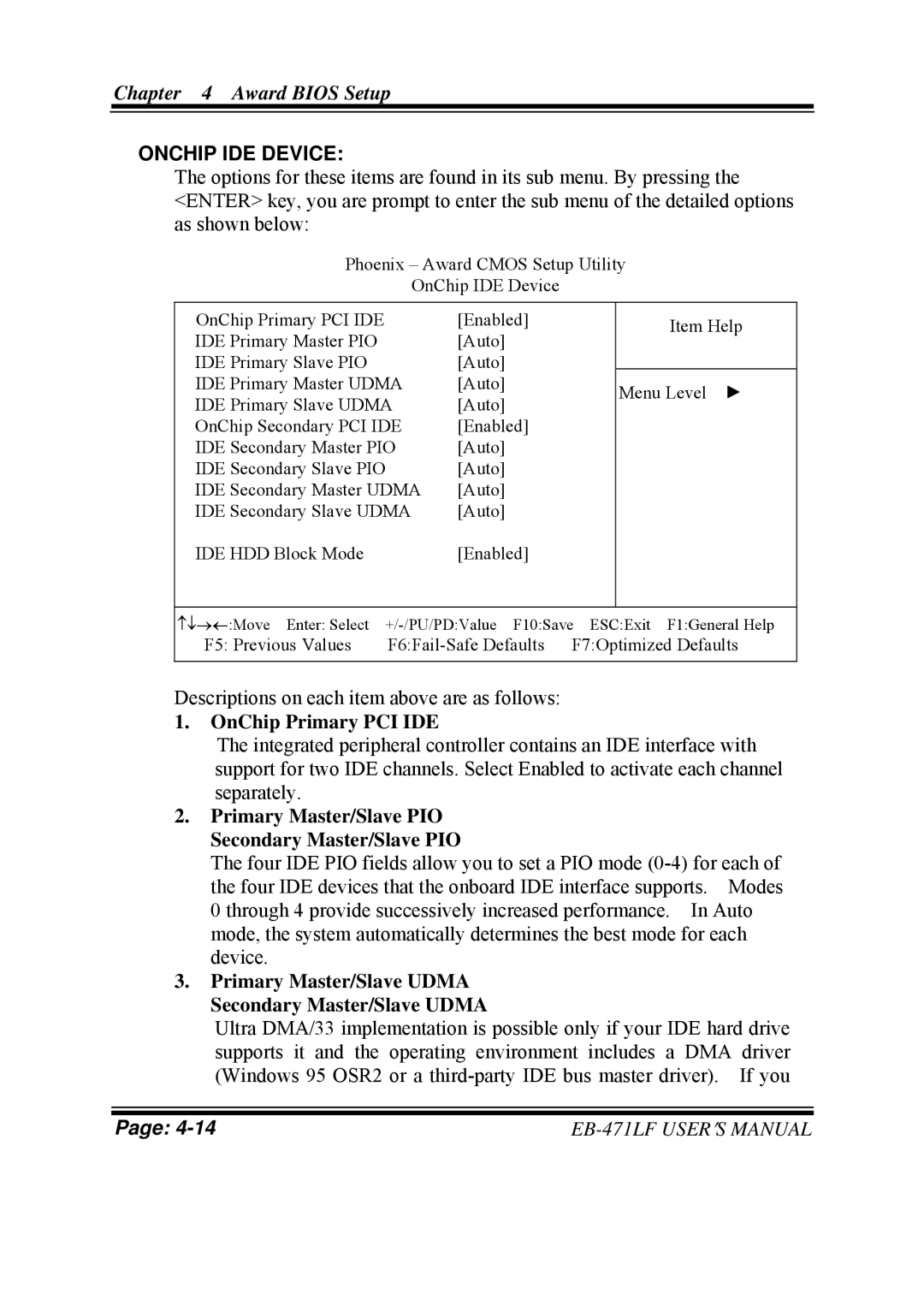
Chapter 4 Award BIOS Setup
ONCHIP IDE DEVICE:
The options for these items are found in its sub menu. By pressing the <ENTER> key, you are prompt to enter the sub menu of the detailed options as shown below:
Phoenix – Award CMOS Setup Utility
OnChip IDE Device
OnChip Primary PCI IDE |
| [Enabled] | Item Help | |
IDE Primary Master PIO |
| [Auto] | ||
|
| |||
IDE Primary Slave PIO |
| [Auto] |
| |
IDE Primary Master UDMA | [Auto] | Menu Level ► | ||
IDE Primary Slave UDMA | [Auto] | |||
| ||||
OnChip Secondary PCI IDE | [Enabled] |
| ||
IDE Secondary Master PIO | [Auto] |
| ||
IDE Secondary Slave PIO | [Auto] |
| ||
IDE Secondary Master UDMA | [Auto] |
| ||
IDE Secondary Slave UDMA | [Auto] |
| ||
IDE HDD Block Mode |
| [Enabled] |
| |
|
|
| ||
↑↓→←:Move Enter: Select | ||||
F5: Previous Values | ||||
|
|
|
| |
Descriptions on each item above are as follows:
1.OnChip Primary PCI IDE
The integrated peripheral controller contains an IDE interface with support for two IDE channels. Select Enabled to activate each channel separately.
2.Primary Master/Slave PIO Secondary Master/Slave PIO
The four IDE PIO fields allow you to set a PIO mode
3.Primary Master/Slave UDMA Secondary Master/Slave UDMA
Ultra DMA/33 implementation is possible only if your IDE hard drive supports it and the operating environment includes a DMA driver (Windows 95 OSR2 or a
Page: |
